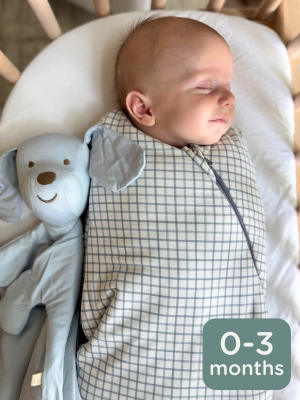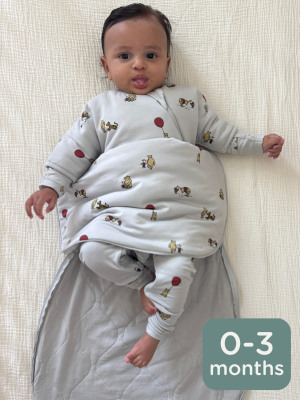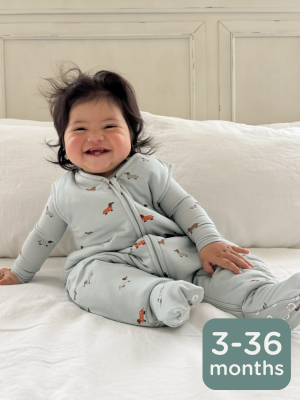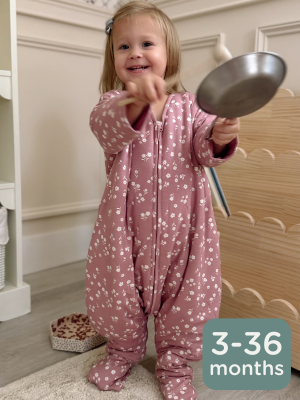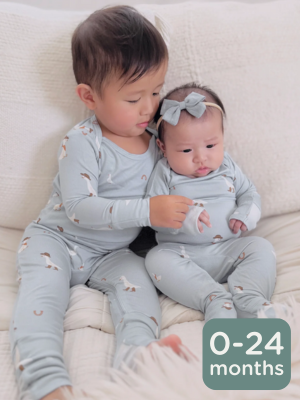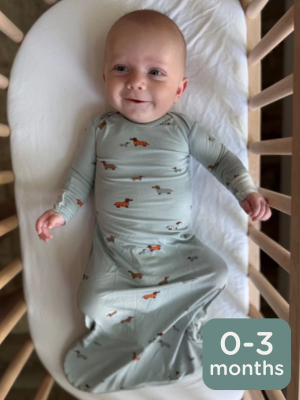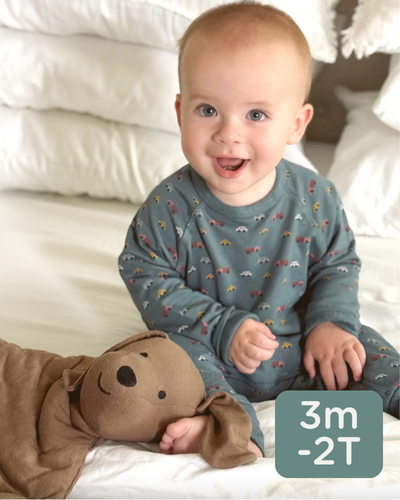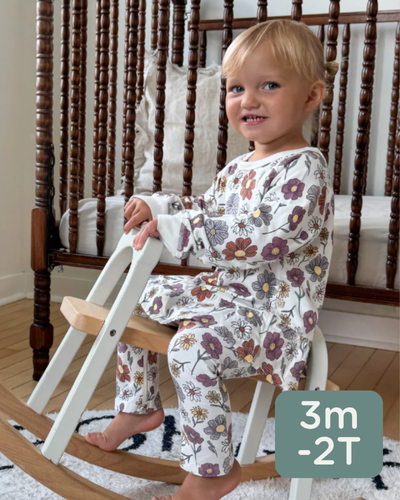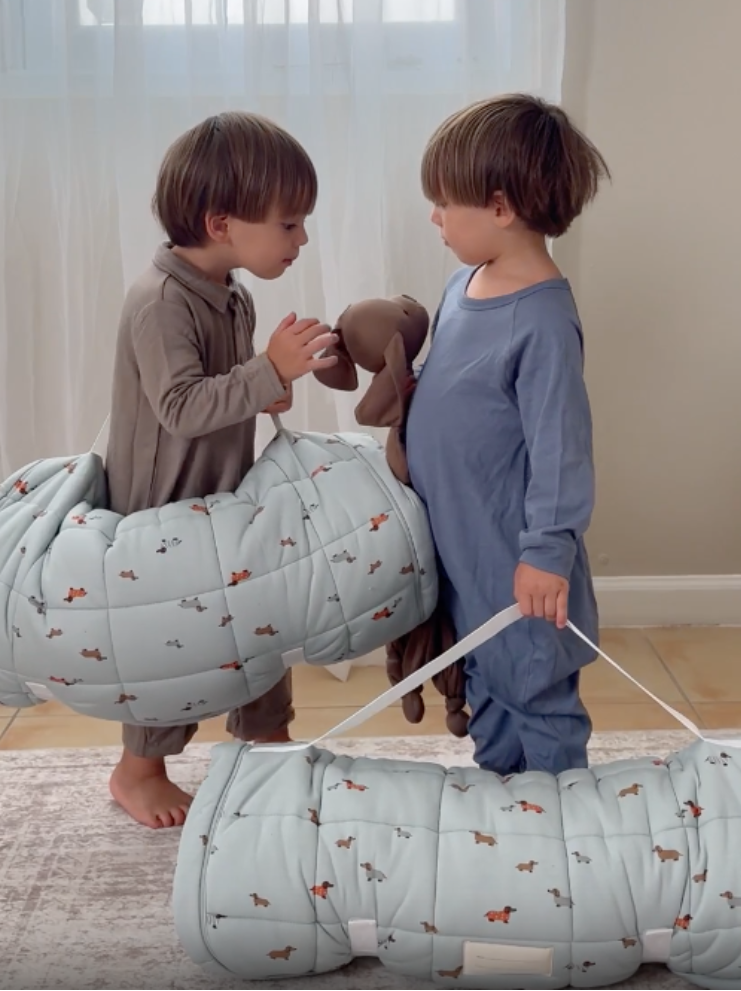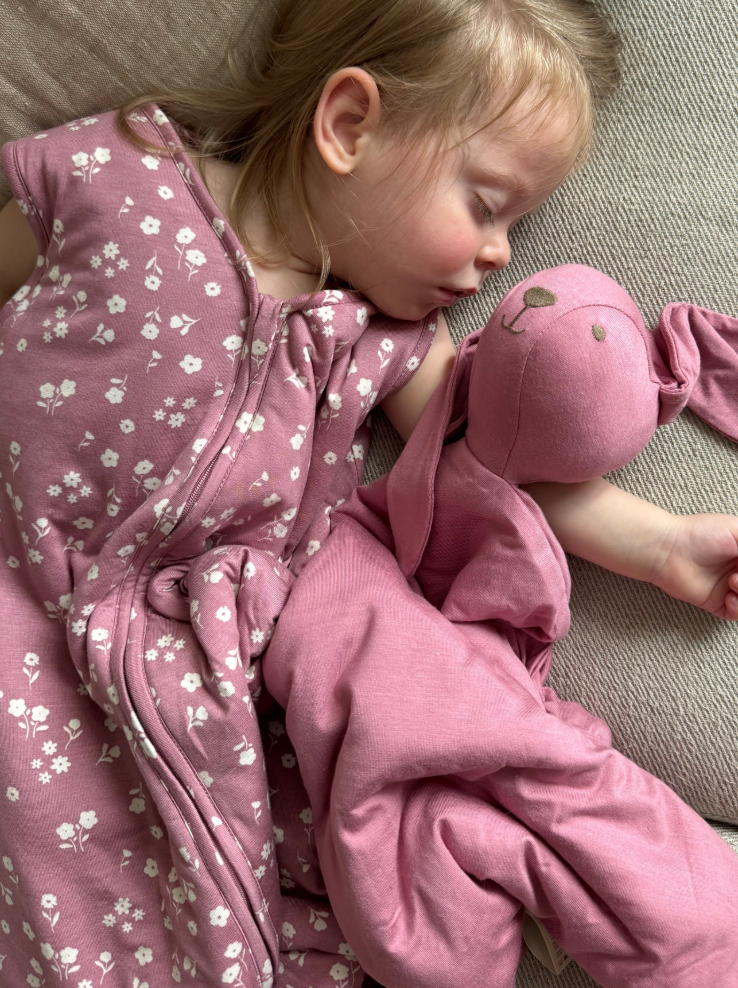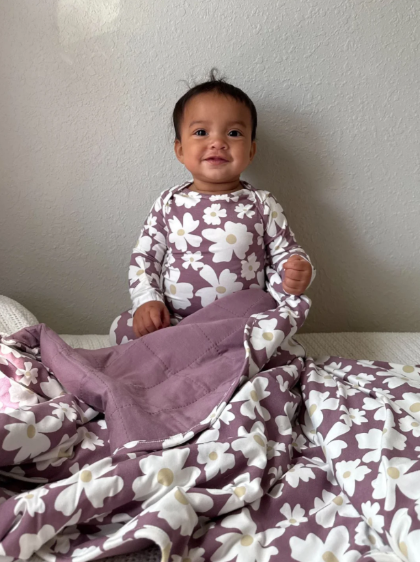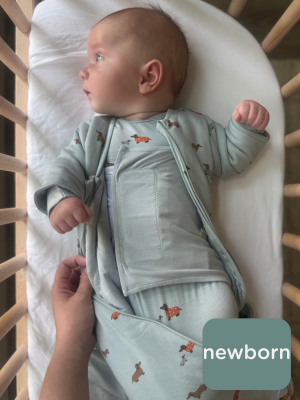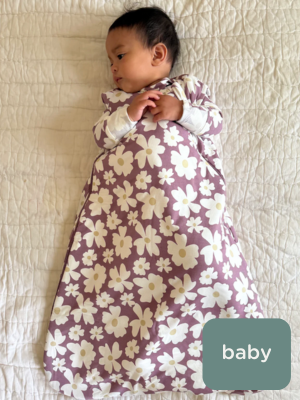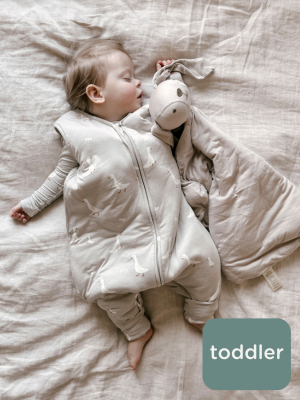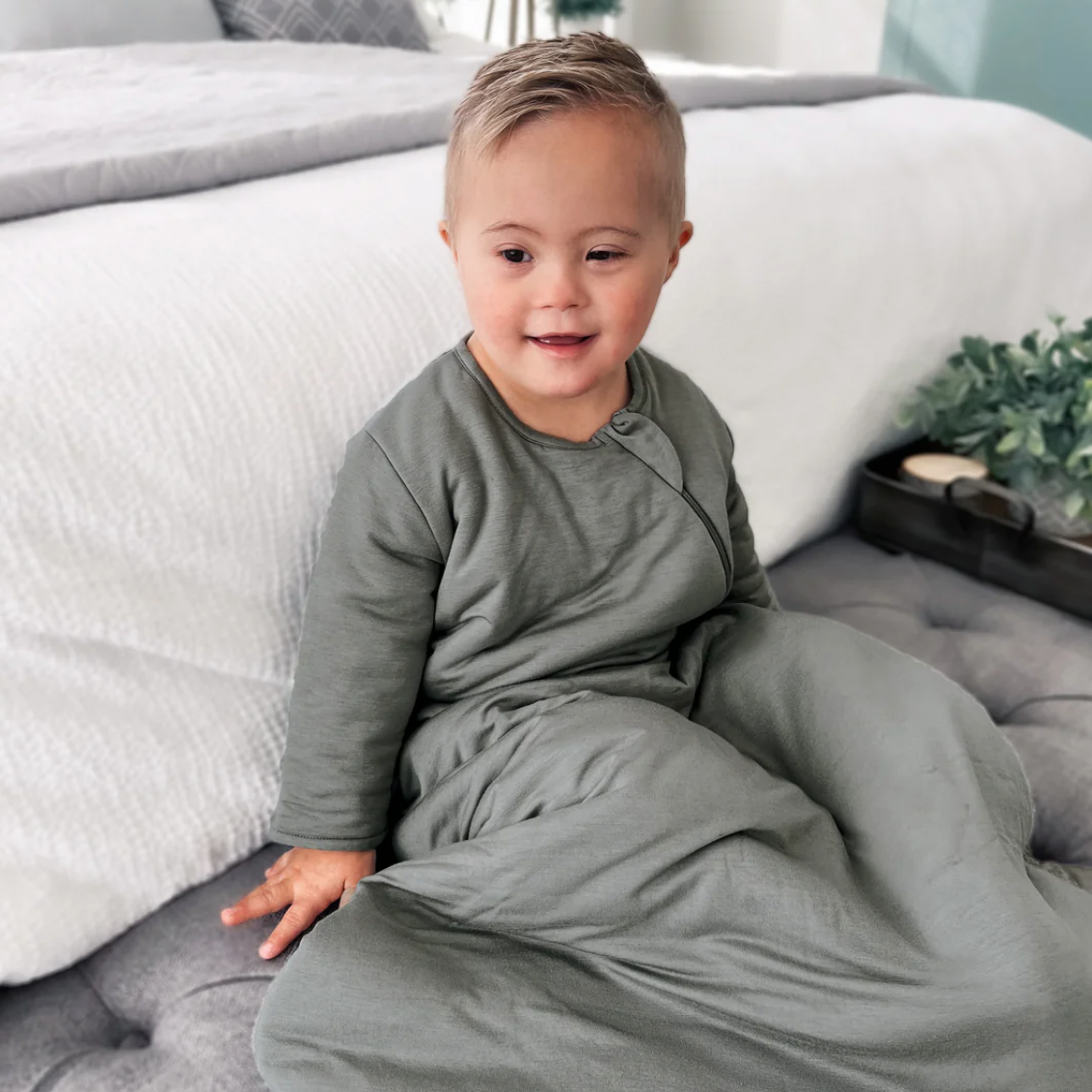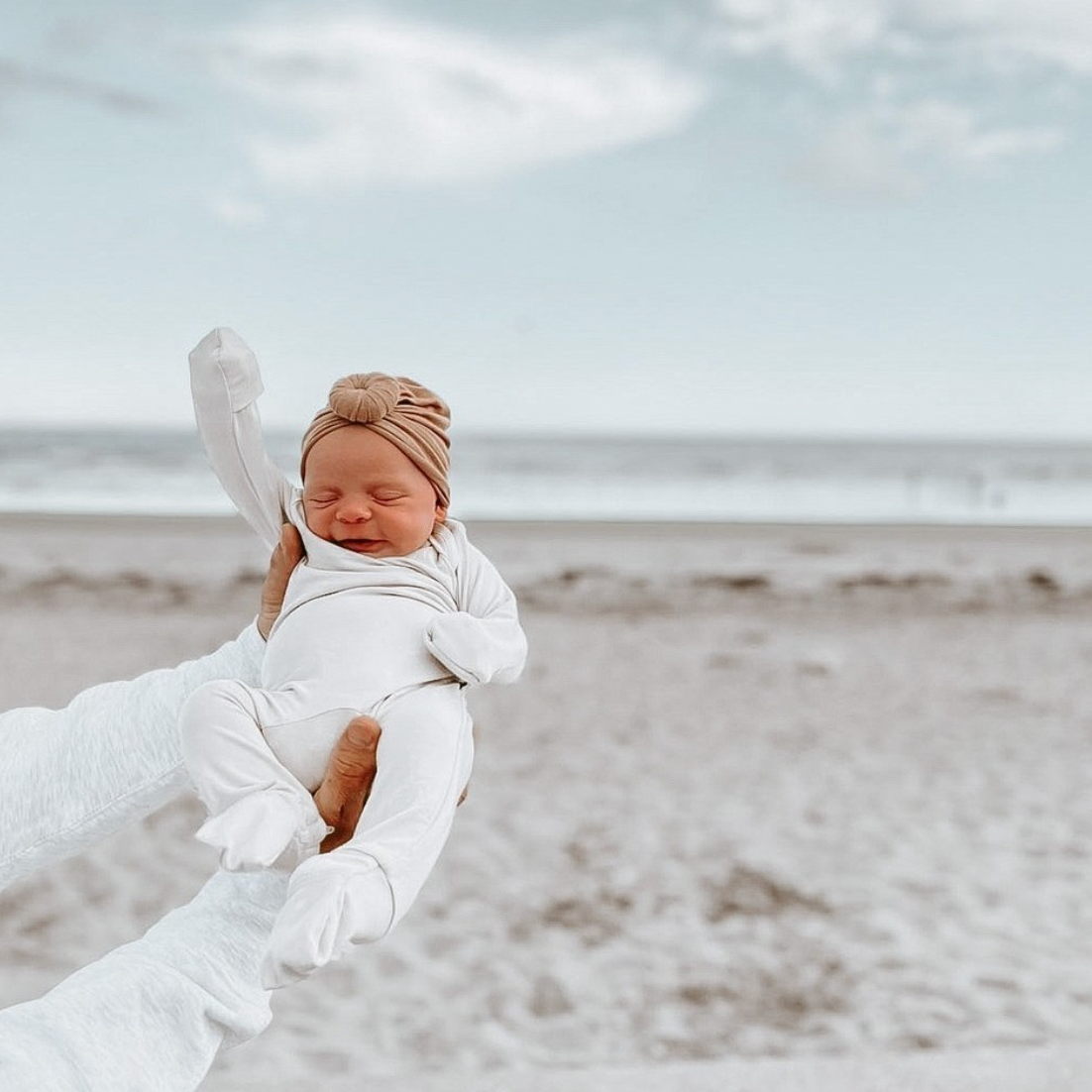Proper positioning in a swaddle is crucial for a baby's comfort and development, particularly for their hips. So how should babies legs be when sleeping in a swaddle? Pediatricians and hip health experts agree that babies’ legs should not be tightly wrapped straight down and pressed together – but in the natural frog position.
The "Frog" Position: A Natural Swaddling Posture for Healthy Development
When swaddling your little one, you’ve probably wondered if baby's legs should be bent or straight in the swaddle. The answer is bent, to promote healthy hip development.
- Hip-Healthy Swaddling: Babies’ legs should be able to bend up and out at the hips. This position allows for natural hip development and is sometimes referred to as the "frog" or "jockey" position, where the hips are spread and the knees are slightly bent.
- Freedom for Movement: While the arms are often snug in a swaddle to prevent the startle reflex, the legs should have room to move. Immobilizing the legs by wrapping them too tightly can increase the risk of hip dysplasia.
Step-by-step Frog Position Swaddling Tips
Step 1: Prepare the Swaddle Sleep Bag
Lay the gunamuna swaddle sleep bag flat. It’s designed with a 4-Way zipper for the easiest diaper changes and a snug, secure fit that’s perfect for nap or nighttime.
Step 2: Place Your Baby in the Swaddle Sleep Bag
Gently place your baby in the sleep bag. The optional inside belly band can be used to help control the startle reflex, ensuring a deeper, more restful sleep.
Step 3: Position the Baby’s Legs
Allow your baby’s legs to bend up and outward into the natural "frog" position. The extra wide bottom of the gunamuna swaddle ensures that the legs can move freely without restriction, supporting healthy hip development.
Step 4: Secure the Arms
Choose to keep your baby’s arms in or out, based on their comfort and developmental stage. This flexibility makes gunamuna's swaddle an ideal choice for safe transitioning, especially for babies who are starting to roll.
Step 5: Zip and Secure
Zip up the sleep bag using the 4-Way zipper. It’s easy to adjust and ensures a tight, secure fit so there are no Houdini-style breakouts.
Step 6: Ensure Comfort and Safety
Double-check that the swaddle is not too tight. You should be able to slip a hand between the sleep bag and your baby’s chest. The hypoallergenic microfiber fill mimics luxury down, providing warmth and comfort without the weight, adhering to AAP and CPSC recommendations for safety.
Step 7: Observe and Adjust
Monitor your baby during their sleep to ensure they remain comfortable and secure. The calming colors of the gunamuna swaddle are designed to promote sleep, helping soothe your baby into a deeper sleep cycle.
Important Tips:
- Always place your baby on their back to sleep.
- Stop using the swaddle feature once your baby shows signs of rolling over or if they seem uncomfortable.
gunamuna's Swaddle Design:
- Room to Grow: gunamuna takes the guesswork out of swaddling with their swaddle designs that include an extra wide bottom. This feature allows the baby’s legs to rest naturally in the "frog" position, promoting hip health and giving parents peace of mind.
- IHDI Approved + Endorsed: Such design considerations align with the recommendations of the International Hip Dysplasia Institute, making gunamuna’s swaddles a choice that supports not just sleep, but proper physiological development.
In conclusion, when swaddling your baby, it’s important to ensure their legs can move freely and maintain that natural "frog-like" position. gunamuna's swaddles are thoughtfully crafted to keep your baby’s upper body snug while allowing their legs the freedom to move and develop as nature intended. This approach melds comfort and care, creating an environment that's conducive to both safe sleeping and healthy growing.

